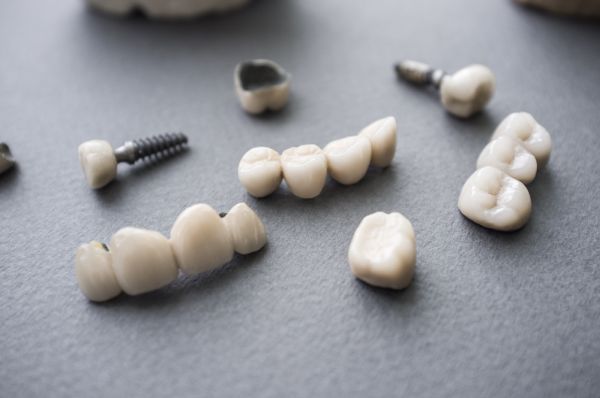What to Expect at the Appointment for Crown Placement on Implants

If you have implants, crown placement is the next step. The crown is attached to the implant, and the two work together to provide the look and function of natural teeth. Find out what happens during this procedure.
The crown placement procedure
Dental crowns are made in a laboratory. Laboratory technicians use impressions to make a crown that fits securely on the implant and fill the space left behind by the natural tooth. Crowns are placed in a single visit, although a prior visit is needed to take the impressions.
Removing the temporary crown
The dentist often attaches a temporary crown to an implant while waiting for the laboratory to fabricate the permanent restoration. The temporary crown must be removed before the permanent crown can be placed. The dentist often numbs the patient before removing the temporary crown, although this is not always necessary. Then the dentist removes the crown and cleans the cement from the tooth.
Checking the fit of the crown
The dentist must check the fit of the crown prior to sealing it in place. The crown is placed over the tooth, but it is not cemented in place at this point. During this process, the dentist might floss between the crown and the natural teeth and have the patient bite down on carbon paper to check the bite.
If the crown does not fit properly, the dentist will trim it with a drill. Then the process will be repeated until the crown fits properly. The dentist will then likely ask the patient for approval before moving forward. The patient will look in a mirror to ensure the crown is aesthetically pleasing.
Placing the crown
Next, the dentist will place the crown. The dentist will add dental cement to the inside of the permanent crown. The crown will go over the tooth and the dentist will have the patient wait several minutes for the cement to begin to set. Then the dentist will remove excess cement that has seeped out of the crown. After the excess cement is removed, the dentist will check the bite one more time.
Aftercare instructions
Patients will receive aftercare instructions immediately following the crown placement procedure. The instructions depend on the placement of the crown and the type of cement used. Some types of dental cement take longer to fully set, so dentists might discourage patients from using the crown to eat for a full day.
Dentists also recommend that patients check the bite once again the following day. By that point, the cement has fully cured and the numbness is completely gone. Patients can check the fit more accurately at that point. If the fit is not correct, patients can go back to the dentist.
Getting a dental crown
During the crown placement procedure, your dentist will remove your temporary crown and check the fit of the permanent one. If the crown does not fit properly, your dentist will trim it and check the fit once again. Then your dentist will cement the crown in place and you will leave with aftercare instructions. Now that you know what to expect, you can move forward with the restoration.
Request an appointment here: https://www.roderickgarciadmd.com or call Roderick A. Garcia, DMD PC at (505) 821-6119 for an appointment in our Albuquerque office.
Check out what others are saying about our services on Yelp: Read our Yelp reviews.
Recent Posts
Emergency dentistry treatments can treat your cracked tooth. This type of dental damage can be painful and often debilitating, especially if the crack reaches the deeper parts of the tooth. Treating this dental damage can stop the discomfort. If you want to find out how emergency dentistry can help your cracked tooth, here are the…
Curious about what you should be asking your general dentist when you visit? Read on to learn more. Visiting a general dentist for regular check-ups is essential for maintaining good oral health. By learning more about their oral health, patients can prevent potential problems and be more aware of changes that may require attention.Going to…
Though we go to our general dentist all the time, one thing that not everyone considers is the fact that the dentist is the one that handles most of our oral health issues. How is it that one dentist is responsible for treating and diagnosing so many of our problems without the help of specialists…
Regular visits to a general dentist are vital in maintaining healthy teeth and gums. General dentists are often primary care providers for dental health. They are specially trained to provide a wide range of services daily to prevent, diagnose, and treat oral health issues. This ensures their patients have healthy, functional, and beautiful smiles. The…


